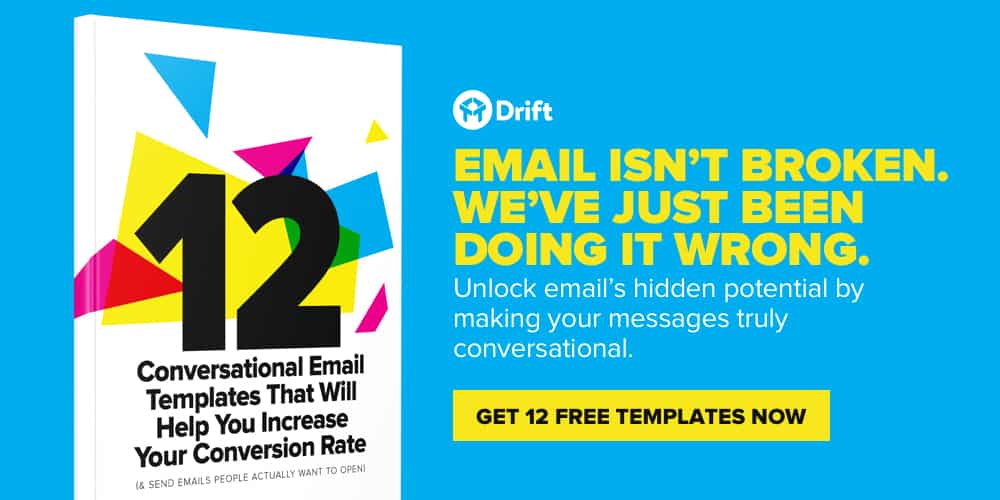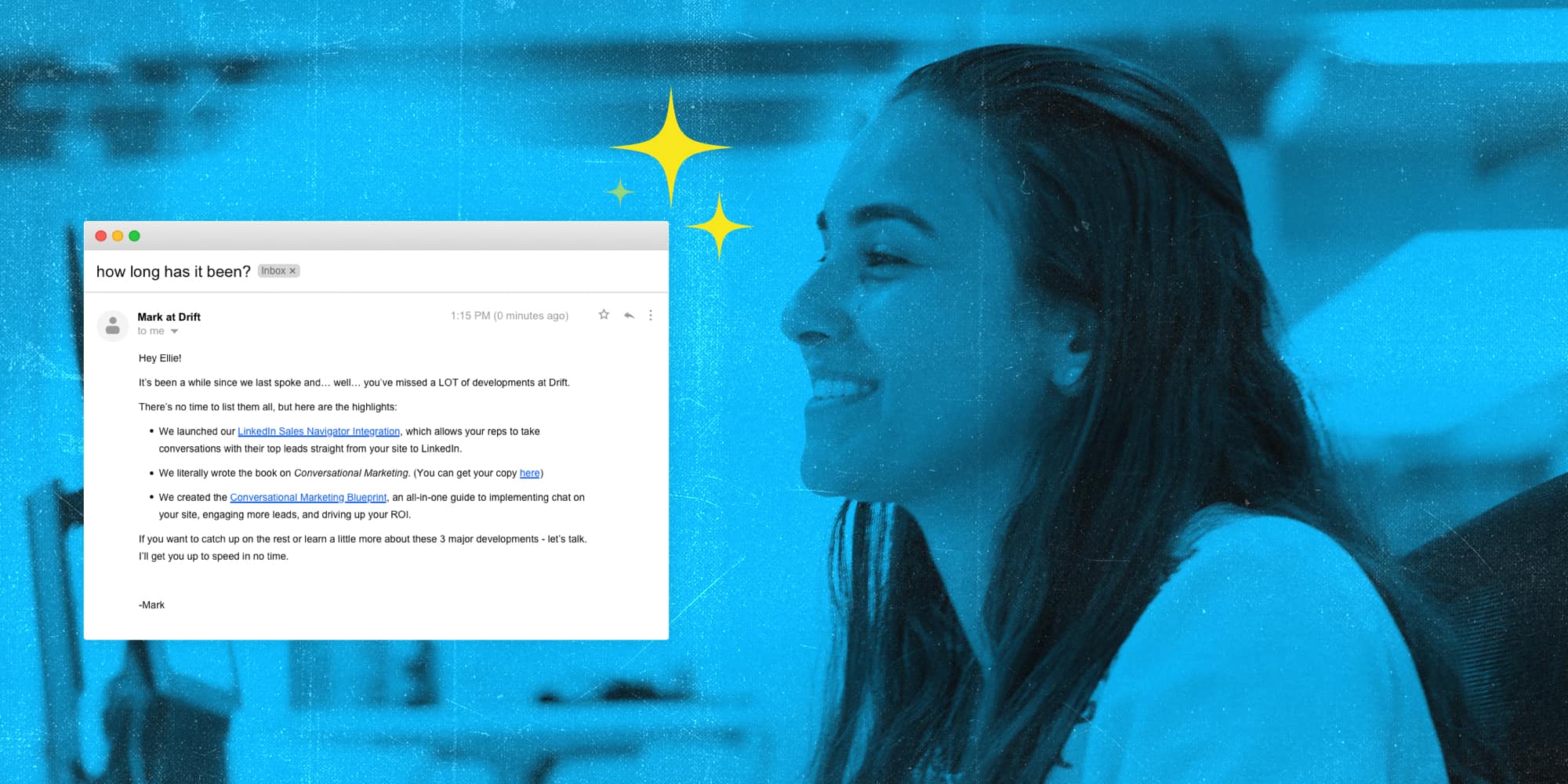
As marketers, we have access to more data than ever before. It’s too easy (and tempting ?) to get lost in everything you could be measuring about your marketing campaigns. That’s why we all distill our options down into a set of core metrics for forecasting, benchmarking, and tracking the performance of each channel.
Email is no exception to this rule. When it comes to email marketing, most marketers focus on three “core” metrics. And, at the surface, these three numbers seem to tell us everything we need to know about an email:
- Delivery Rate: How many people got the email?
- Open Rate: How many people thought the email was interesting enough to open?
- Click-Through-Rate (CTR): How many people clicked through for more information?
But these metrics leave some HUGE questions unanswered. That’s because these three metrics don’t measure the strength of our relationships with prospective or current buyers.
Too often, this focus sets email up primarily as a one-way channel for outbound marketing, rather than a two-way channel for engagement. Most companies don’t encourage engagement in an email and purposefully optimize their emails for impersonal link clicks and website visits. They also send emails from a “no reply” address – you couldn’t send a clearer message than that.
When you take a second to really think about it, NONE of the most common email metrics give marketers any insights into the strength of the relationships they’re building with buyers.
So, what’s the ultimate email metric for today’s marketers? REPLIES. Not clicks.
Why?
Here’s what I’ve got ?
You Can’t Measure Relationships With Clicks
According to Salesforce’s State of Marketing report, 84% of customers say being treated like a person, not a number, is very important to winning their business. So, it comes as no surprise that marketers are “focused on engaging with customers and prospects in the real-time, conversational manner they expect.” This means the old way of doing email marketing (aka pushing a single offer to as many people as possible) no longer works.
As marketers, we use the conversational marketing framework to engage with our buyers 1:1, understand their unique goals and challenges, and recommend the right solution for them. Transitioning email into a channel for conversational marketing will create a better customer experience and drive better results for marketers.
Think about it. Our goal as marketers isn’t to get people to visit our landing pages, or even download our content ?
It’s to show (not tell) them how we can help and get them interested in learning what that would look like for their business. Then, marketing connects them with the right person or team for more information, whether that’s sales, customer support, or someone else.
To measure how many of these sales-ready relationships we’re building, we all need to be measuring the number of replies we get on our marketing emails. To make this comparable across different email programs, you also need to measure the reply rate (just divide the number of replies by the total number of people you sent it to and present the number as a percentage).
What does a “good” reply rate look like? Like CTR, this rate will vary depending on your industry. Here at Drift, we see up to a 31% reply rate on our best templates, like this one ?
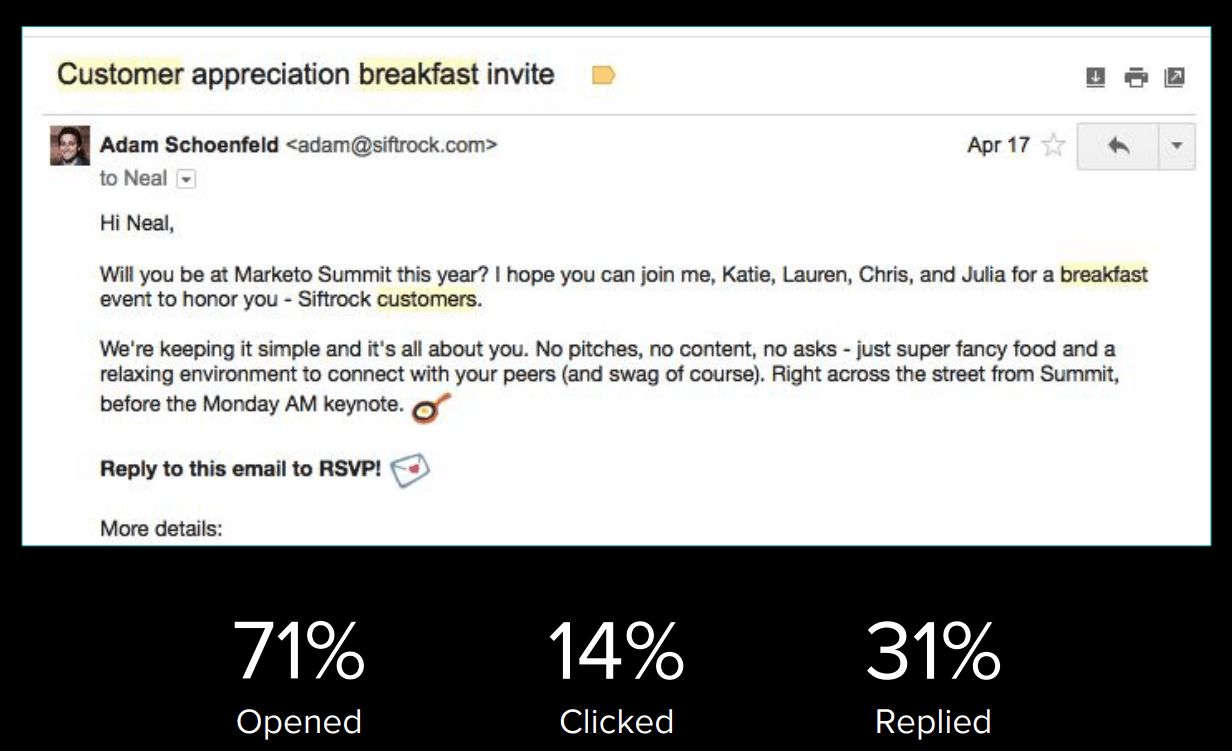
This means we’re starting two-way conversations with 31 of every 100 people who reply to our emails.
How Do You Generate More Two-Way Engagement With Email?
You already have an excellent database, tons of intelligence on your leads and customers, and you already know how to tailor and target messages for your audience. Now you just need to go from being a great sender of email to also being a great receiver of email.
Luckily this change doesn’t require a complete overhaul. Focus on adding a “reply” CTA to drive engagement at certain times in the buyer’s journey. As a bonus when people do reply, you’ll also be boosting your deliverability – receiving mail servers love engagement, just like buyers.
Here’s how we set up email for two-way engagement here at Drift:
- Always send from someone who can reply, and never from a “no-reply” email address. This can be a specific person on your team or a shared inbox.
- Develop an efficient process for separating human replies from the pile of autoresponders and out of office messages. Inbox filters and email reply management tools can help you do this.
- Set expectations for how quickly those senders will follow-up with those responses.
- Instead of gating your content with forms, ask people to chat or email you for a PDF copy of your content. They’ll see first hand that you actually respond to them.
- When you’re emailing people in the middle and bottom of your funnel, straight-up ask them to reply for more information. This enables you to easily start a two-way discussion about their goals and challenges.
Want to see what this looks like in the wild? Here’s a couple of our favorite conversational email use cases:
1. Follow-up with new leads from events:

2. Re-engage the accounts that weren’t ready to move forward:
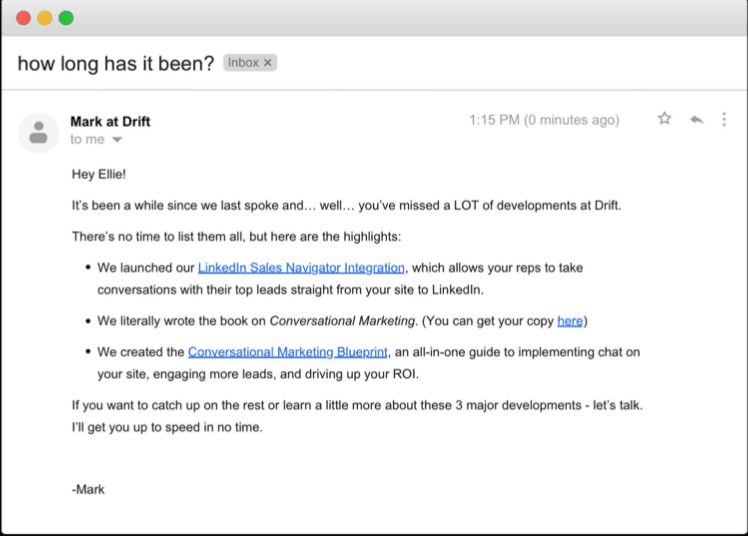




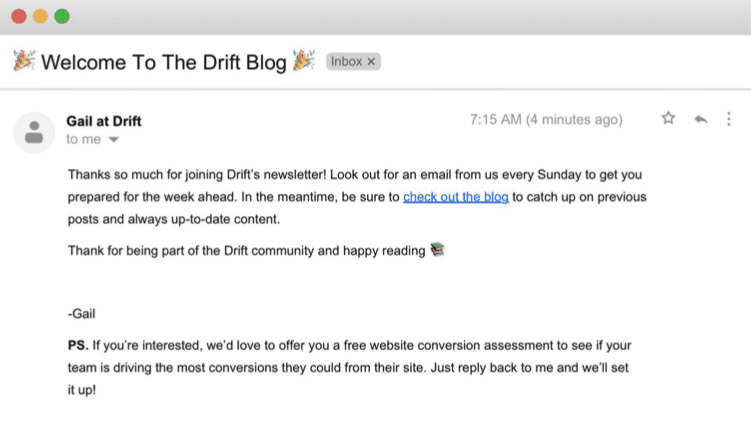 Want even more examples?
Want even more examples? 